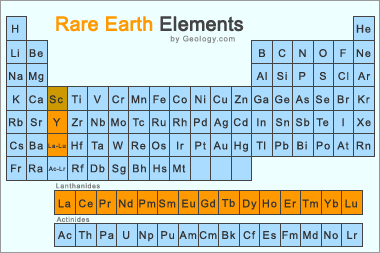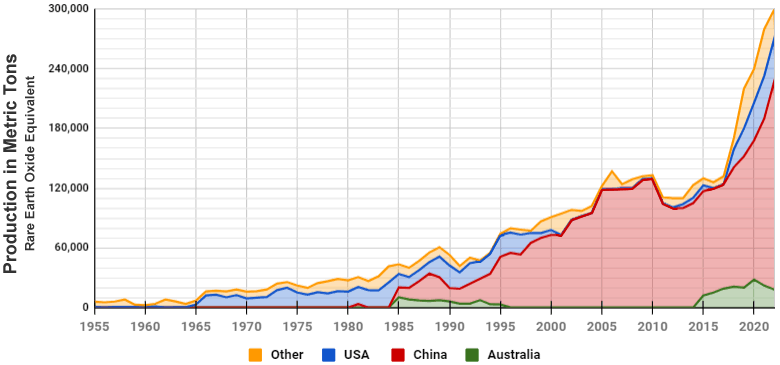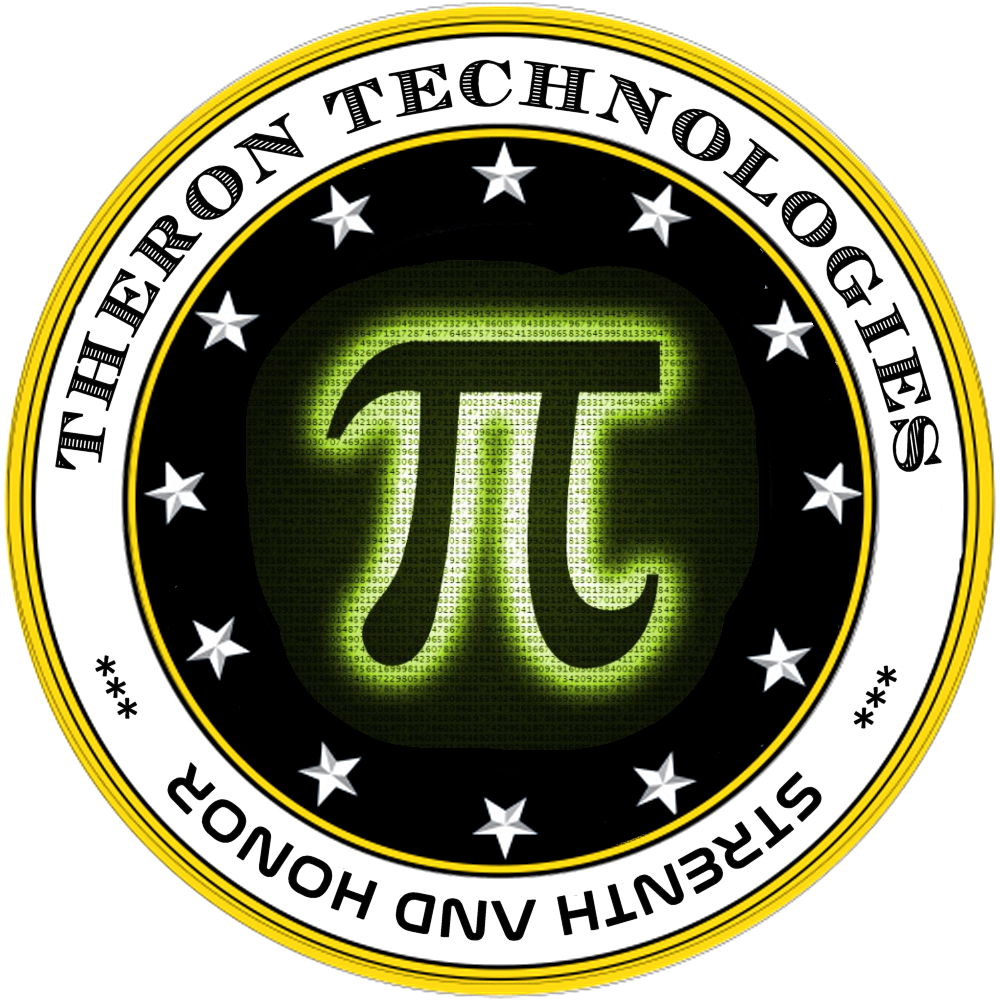Facts about Neodymium Magnets
The oersted is the coherent derived unit of the auxiliary magnetic field H in the centimetre–gram–second system of units. It is equivalent to 1 dyne per maxwell.
Grades Of Neodymium Magnets
Neodymium Magnets start with the letter ‘N’, all the names of neodymium magnets begin with ‘N’ for neodymium. The number that follows is a little more technical as this represents the maximum energy product of the magnet in ‘Mega-Gauss Oersteds’ (MGOe). This is the primary indicator of a magnet's ‘strength’. Simply, the higher the maximum energy product value, the greater the magnetic field the magnet will generate in a particular application.
The grades generally available to buy, range from N30 to N52 as lower grades are generally no longer manufactured.Neodymium magnet grades and their magnetic properties.
|
Remanence BR mT (kGs)
|
Coercive Force HcB kA/m (kOe)
|
Intrinsic Coercive Force Hcj kA/m (kOe)
|
Max. energy product (BH)max
kJ/m3
|
Max. Operating Temperature
TW
|
|
N35 |
1170-1220 (11.7-12.2) |
?868 (?10.9) |
?955 (?12) |
263-287 (33-36) |
80°C |
|
N38 |
1220-1250 (12.2-12.5) |
?899 (?11.3) |
?955 (?12) |
287-310 (36-39) |
80°C |
|
N40 |
1250-1280 (12.5-12.8) |
?907 (?11.4) |
?955 (?12) |
302-326 (38-41) |
80°C |
|
N42 |
1280-1320 (12.8-13.2) |
?915 (?11.5) |
?955 (?12) |
318-342 (40-43) |
80°C |
|
N45 |
1320-1380 (13.2-13.8) |
?923 (?11.6) |
?955 (?12) |
342-366 (43-46) |
80°C |
|
N48 |
1380-1420 (13.8-14.2) |
?923 (?11.6) |
?955 (?12) |
366-390 (46-49) |
80°C |
|
N50 |
1400-1450 (14.0-14.5) |
?796 (?10.0) |
?876 (?11) |
382-406 (48-51) |
80°C |
|
N52 |
1430-1480 (14.3-14.8) |
?796 (?10.0) |
?876 (?11) |
398-422 (50-53) |
80°C |
|
33M |
1130-1170 (11.3-11.7) |
?836 (?10.5) |
?1114 (?14) |
247-263 (31-33) |
100°C |
|
35M |
1170-1220 (11.7-12.2) |
?868 (?10.9) |
?1114 (?14) |
263-287 (33-36) |
100°C |
|
38M |
1220-1250 (12.2-12.5) |
?899 (?11.3) |
?1114 (?14) |
287-310 (36-39) |
100°C |
|
40M |
1250-1280 (12.5-12.8) |
?923 (?11.6) |
?1114 (?14) |
302-326 (38-41) |
100°C |
|
42M |
1280-1320 (12.8-13.2) |
?955 (?12.0) |
?1114 (?14) |
318-342 (40-43) |
100°C |
|
45M |
1320-1380 (13.2-13.8) |
?995 (?12.5) |
?1114 (?14) |
342-366 (43-46) |
100°C |
|
48M |
1360-1430 (13.6-14.3) |
?1027 (?12.9) |
?1114 (?14) |
366-406 (48-49) |
100°C |
|
50M |
1400-1450 (14.0-14.5) |
?1033 (?13.0) |
?1114 (?14) |
382-406 (48-51) |
100°C |
|
35H |
1170-1220 (11.7-12.2) |
?868 (?10.9) |
?1353 (?17) |
263-287 (33-36) |
120°C |
|
38H |
1220-1250 (12.2-12.5) |
?899 (?11.3) |
?1353 (?17) |
287-310 (36-39) |
120°C |
|
40H |
1250-1280 (12.5-12.8) |
?923 (?11.6) |
?1353 (?17) |
302-326 (38-341) |
120°C |
|
42H |
1280-1320 (12.8-13.2) |
?955 (?12.0) |
?1353 (?17) |
318-342 (40-43) |
120°C |
|
45H |
1320-1360 (13.2-13.6) |
?963 (?12.1) |
?1353 (?17) |
342-366 (43-46) |
120°C |
|
48H |
1370-1430 (13.7-14.3) |
?995 (?12.5) |
?1353 (?17) |
366-390 (46-49) |
120°C |
|
35SH |
1170-1220 (11.7-12.2) |
?876 (?11.0) |
?1592 (?20) |
263-287 (33-36) |
150°C |
|
38SH |
1220-1250 (12.2-12.5) |
?907 (?11.4) |
?1592 (?20) |
287-310 (36-39) |
150°C |
|
40SH |
1240-1280 (12.5-12.8) |
?939 (?11.8) |
?1592 (?20) |
302-326 (38-41) |
150°C |
|
45SH |
1320-1380 (13.2-13.8) |
?1003 (?12.6) |
?1592 (?20) |
342-366 (43-46) |
150°C |
|
28UH |
1020-1080 (10.2-10.8) |
?764 (?9.6) |
?1990 (?25) |
207-231 (26-29) |
180°C |
|
30UH |
1080-1130 (10.8-11.3) |
?812 (?10.2) |
?1990 (?25) |
223-247 (28-31) |
180°C |
|
33UH |
1130-1170 (11.3-11.7) |
?852 (?10.7) |
?1990 (?25) |
247-271 (31-34) |
180°C |
|
35UH |
1180-1220 (11.8-12.2) |
?860 (?10.8) |
?1990 (?25) |
263-287 (33-36) |
180°C |
|
38UH |
1220-1250 (12.2-12.5) |
?876 (?11.0) |
?990 (?25) |
287-310 (36-39) |
180°C |
|
40UH |
1240-1280 (12.5-12.8) |
?899 (?11.3) |
?1990 (?25) |
302-326 (38-41) |
180°C |
|
28EH |
1040-1090 (10.4-10.9) |
?780 (?9.8) |
?2388 (?30) |
207-231 (26-29) |
200°C |
|
30EH |
1080-1130 (10.8-11.3) |
?812 (?10.2) |
?2388 (?30) |
223-247 (28-31) |
200°C |
|
33EH |
1130-1170 (11.3-11.7) |
?876 (?10.5) |
?2388 (?30) |
247-271 (31-34) |
200°C |
|
35EH |
1170-1220 (11.7-12.2) |
?876 (?11.0) |
?2388 (?30) |
263-287 (33-36) |
200°C |
|
38EH |
1220-1250 (12.2-12.5) |
?899 (?11.3) |
?2388 (?30) |
287-310 (36-39) |
200°C |
|
28AH |
1040-1090 (10.4-10.9) |
?787 (?9.9) |
?2624 (?33) |
207-231 (26-29) |
230°C |
|
30AH |
1080-1130 (10.8-11.3) |
?819 (?10.3) |
?2624 (?33) |
223-247 (28-31) |
230°C |
|
33AH |
1130-1170 (11.3-11.7) |
?843 (?10.6) |
?2624 (33) |
247-371 (31-34) |
230°C |





